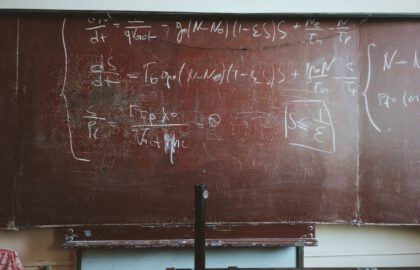New to the data science field and don’t know exactly where to start? One of the best ways to start learning data science and its subgroups is with a book.
How do I start learning about data science?
Data science is an emerging field(1). Individuals and consumers create around 70% of the online data, of which 80% is stored, managed, and analyzed by enterprises and companies. While there’s virtually always a high demand for data scientists, finding jobs for the role of “data scientist” can be challenging, as companies often need specific types of data scientists.
Data scientists and analysts come from backgrounds in various fields such as:
- Data Engineer
- Database Administrator
- Machine Learning Engineer
- Data Architect
- Statistician
- Business Analyst
- And more
A data science bootcamp will give you hands-on learning experiences that are more cost-efficient and quicker than a four-year institute—you can get the data science and analysis skills you need in as little as 15 weeks, depending on the program you choose.
Another quick and easy way to learn data science at your own pace is with the help of data science books!
What are the best books to learn data science for data mining?
A branch of data science includes data mining. Data mining is the process of extracting and figuring out patterns within large data sets—involving machine learning, statistics, and database systems.
Data miners are in high demand in a lot of companies for various applications. Data miners are involved with marketing, retailing, banking, medicine, and television/radio.
DATA MINING: CONCEPTS AND TECHNIQUES – Jiawei Han, Michelin Kamber, and Jian Pei
This book covers the concepts and techniques in processing the gathered data or information, which will be used in various data mining applications. This book also explains data mining and the tools that data miners use to discover knowledge from the collected data.
This book will provide you with great insight for computer science students, application developers, business professionals, and researchers who seek information on data science. Methods involved in frequent mining patterns, associations, and correlations for extensive data are described at a college level within this book.
DATA MINING – Charu C. Aggarwal
This book explores the different aspects of data mining by starting at the fundamentals of complex data types and their applications. It introduces advanced data topics such as text, time series, discrete sequences, spatial data, graph data, and social networks. The introductory chapters have four main problems: clustering, classifications, association pattern mining, and outlier analysis.
What are the best books for planning your career in data science?
DATA SCIENCE FOR BUSINESS – Foster Provost and Tom Fawcett
If you’re looking for a book filled with spoon-fed algorithms, this book is NOT for you. This book, instead, presents the fundamental principles for extracting valuable knowledge from data. This book is for those who need to understand data science and those who want to develop data-analytic thinking for future careers, companies, and businesses.
BUILD A CAREER IN DATA SCIENCE – Emily Robinson and Jacqueline Nolis
Following up on the previous book recommendation, this book is your guide to landing your first data science job and developing into a valued senior employee. By following clear and simple instructions, you’ll learn to craft an amazing resume and ace your interviews. In this demanding, rapidly changing field, it can be challenging to keep projects on track, adapt to company needs, and manage tricky stakeholders. You’ll love the insights on how to handle expectations, deal with failures, and plan your career path in the stories from seasoned data scientists included in the book.
What are the best books to learn data science for data cleaning and exploration?
Data cleaning involves the process of preparing data for analysis by removing or modifying data that is not right—incorrect, incomplete, irrelevant, duplicated, improperly formatted—because the data isn’t necessary or helpful for analyzing data.
Data exploration, related to data cleaning, is the initial step in data analysis, where users explore a particular data set in an unstructured way to discover patterns, characteristics, properties, and points of interest.
CLEANING DATA FOR EFFECTIVE DATA SCIENCE – David Mertz
This book introduces that vital first step to successful data science, data analysis, and machine learning. If you’re planning on working with any kind of data in the future, this book will come in handy, as it will be your go-to resource with insights and heuristics that experienced data scientists had to learn the hard way.
BIG DATA: A REVOLUTION THAT WILL TRANSFORM HOW WILL LIVE, WORK, AND THINK – Viktor Mayer-Schoenberger, and Kenneth Cukier
This book gives a unique perspective to data exploration, covering the obsolescence of sampling, the acceptance of increased measurement error in return for more data, and the age-old search for causality. The central theme is that big data will become the dominant scientific paradigm, and in the future, it will change society.
DATA EXPLORATION USING EXAMPLE-BASED METHODS – Matteo Lissandrini, Davide Mottin, Themis Palpanas, and Yannis Velegrakis
While data usually comes in many formats and dimensions, the information extraction and exploration processes can be challenging. This book will cover example-based methods vital to infer the results that the user is looking for in their mind but may not express easily. This book shows how different data types require various techniques and present algorithms meant for relational, textual, and graph data.
What are the best books to learn data science for predictive modeling and data visualization?
This subgroup is split into two, usually for a productive reason. Predictive modeling solutions are a form of data-mining technology/subgroup that works by analyzing historical and current data to generate a model to help predict future outcomes. Predictive modeling scientists work with statistical tools such as regression, oscillations, time elements, and more.
Data visualization is similar to modeling the data but without the predicting part. Data visualization scientists put together the data by communicating with the data so that predictive modeling scientists can go off of their visuals to predict future outcomes. Data visualization scientists must be creative, as they work with many types of graphs, charts, lines, and other methods of showing data.
STATISTICAL INFERENCE VIA DATA SCIENCE: A MODERN DIVE INTO R AND THE TIDYVERSE – Chester Ismay and Albert Y. Kim
This book provides a pathway for learning about statistical inference using data science tools widely used in industry, academia, and government. It introduces the tidyverse suite of R packages, including the ggplot2 package for data visualization, and the dplyr package for data wrangling. After equipping readers with just enough of these data science tools to perform effective exploratory data analyses, the book covers traditional introductory statistics topics like confidence intervals, hypothesis testing, and multiple regression modeling, while focusing on visualization throughout. This book is intended for individuals who would like to simultaneously start developing their data science toolbox and start learning about the inferential and modeling tools used in much of modern-day research.
APPLIED PREDICTIVE MODELING – Max Kuhn and Kjell Johnson
This book is intended for a broad audience—novices at predictive modeling and experts with predictive modeling applications and methods. While a lot of math and statistics are involved with predictive modeling, the non-mathematical readers will appreciate the intuitive explanations of the techniques that this book uses.
Readers should have basic statistical knowledge—specifically with topics such as correlation and linear regression analysis. While the book is biased against complex equations, a mathematical background is needed for advanced topics as you dive deeper with predictive modeling.
FEATURE ENGINEERING AND SELECTION: A PRACTICAL APPROACH FOR PREDICTIVE MODELS – Max Kuhn and Kjell Johnson
This is almost seen as a continuation of their previous book that is listed directly above this book. The goal of the last book was to elucidate a framework for making models that generate accurate predictions for the future. In this book, they include pre-processing the data, splitting the data into training and testing sets, selecting an approach for identifying optimal tuning parameters, building models, and estimating the predictive performance of those models.
THINK BAYES – Allen Downey
This book is an introduction to Bayesian statistics using computational methods. Most books on Bayesian statistics use mathematical notation and present ideas in terms of mathematical concepts like calculus. This book uses Python code instead of math, and discrete approximations instead of continuous functions.
STORYTELLING WITH DATA – Cole Nussbaumer Knaflic
This book teaches their audience about the fundamentals of data visualization and how to use data to communicate effectively with the audience, companies, or other data sets. You’ll be able to use the power of data visualization to make a pivotal point within your story to whoever you’re presenting the data to—yourself, your group, or your supervisors. Instead of treating this text like a book, think of it more as a one-of-a-kind immersive learning experience through which you can become—or teach others to be—a powerful data storyteller.
VISUALIZE THIS – Nathan Yau
This book can be treated as a practical guide on visualization and how to approach real-world data. Many books discuss the topics of data visualization that describe the best practices or the better design concepts to use, but what do you do when it comes time for you to actually make and develop something?
With this book, you can learn how to create graphics that tell stories with accurate data, and you’ll have fun in the process. With the author’s help, you can learn to make statistical graphs in R, design in Adobe Illustrator, and create interactive graphics in JavaScript.
CREATING MORE EFFECTIVE GRAPHS – Naomi Robbins
This book gives you the basic knowledge and techniques required to choose and create appropriate graphs for a broad range of applications. Using real-world examples everyone can relate to, it highlights some of today’s most effective methods.
Enjoyed these books? Try a free data science lesson from Flatiron School. It’s a great way to decide if you want to sign up for a data science bootcamp.
Citations:
- https://www.simplilearn.com/data-science-facts-article
- https://www.nbr-graphs.com/resources/recommended-books/




